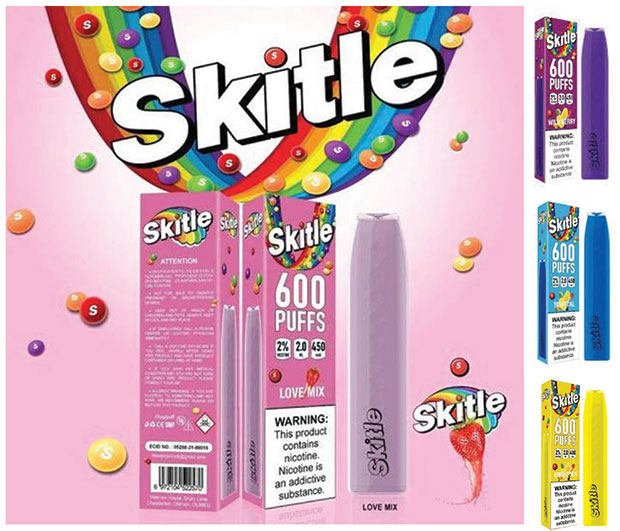There is general consensus that smoking alternatives play a pivotal role in helping smokers quit tobacco which remains the biggest threat to life in the UK. However, recently the vaping category has come under intense pressure due to environmental and sustainability issues as well as non-compliant products and the youth appeal of some products. According to ASH, youth use of e-cigarettes almost doubled over the past year and the use of disposables has increased almost ninefold from 2021 to 2023 with 11.6% of 11-17 year olds now using or experimenting with vaping products.

The government has opened a consultation on the youth appeal of vaping products with many claiming that manufacturers are deliberately targeting youth with child friendly flavours, graphics and packaging. Recent calls from health charities and MPs have also made headlines as they seek for vaping to be treated like tobacco products with plain packaging and a display ban while half of all Scottish local authorities have written to the Scottish Government to enact a blanket ban on disposable vaping products,
And it’s not just in the UK; recently Australia has banned the use of vape sales in retail, with devices now only available via prescription; in New Zealand flavoured products can only be sold in specialist vape stores; and many other countries have outlawed the sale of vaping products including, ironically, China – where the majority of vapes sold in the UK are manufactured have a ban on flavours other than tobacco.
Even though the UK government embraces the tobacco harm reduction potential of the category, exemplified by its recent Swap to Stop scheme where one million vape starter kits will be issued to smokers, there is now a clamour among some politicians, academics and health bodies to regulate the category further.
The UK government has recently revealed plans to outlaw the free giveaways of vapes and impose an age restriction of 18 on zero-nicotine vaping products but what other measures could potentially be introduced to prevent youth use of single-use vapes?
Ban certain child friendly flavours, graphics and colours
Many believe that a crackdown on sweet and child friendly flavours such as cotton candy, bubblegum and raspberry slush is imminent as well as reducing the palette of bright colours which are often used to accessorise outfits. There are also many vapes that target youth by infringing on other companies’ intellectual property such as Skitle (Skittles), Ribuson (Rubicon) Choopa Choops (Chupa Chups) and Pryme (Prime) Recent research from the US shows that a reduction of 70 percent in youth use could be achieved by only offering tobacco and menthol variants. However, sweet and fruit flavours dominate the market and there are fears that by banning flavours, adult smokers may go back to smoking cigarettes.
Introduce plain packaging for ecigarettes
Another piece of research from King’s College London found that removing brand imagery from packs reduced appeal of vapes to teenagers without reducing appeal to adults fuelling the argument for plain packaging. However the UKVIA has said that such a move would ‘simply put vaping in the same bracket as smoking at a time when we know that misperceptions of the relative harm between the two categories is discouraging adult smokers to quit using vaping.’
Display and advertising ban
Making vaping products less visible in-store could also be part of further regulation with a display ban similar to cigarettes to limit the appeal to children. This would enable e-cigarettes to still be sold but hidden from the customer’s view. Similarly a ban on point of sale materials could be introduced to limit appeal.
Make disposables more expensive
Disposables can be purchased for as little as £4 and by increasing the price via a tax hike, it is claimed that this would put disposables out of the price range of youngsters. Supporters of the tax levy also claim that the tax gained could be used to fund educational and behavioural schemes to warn young people about the dangers and addiction of youth vaping.
Greater enforcement
The government has already committed to investing £3m into creating enforcement squads to help Trading Standards track down retailers who sell to youth. However there are concerns that this funding, while welcome, is wholly inadequate as this money will also be used to curb the sales of illicit, non-compliant products which Trading Standards believe to be the ‘greatest threat to the high street’ as well as product testing and border checks. The UKVIA has repeatedly called for fines to be increased from £250 to £10,000 for retailers engaging in underage sales.
Retailer Licensing
In addition to greater fines, the UKVIA and others have called for the introduction of a licensing or approved retailer scheme to sell vapes. Such a scheme already exists in Scotland but not in other UK countries. In Scotland, only retailers on the Register of Tobacco and Nicotine Vapour Product are allowed to sell vaping products. The introduction of a register would professionalise the industry – especially if there was an annual registration fee – and would also act as a deterrent as the licence could be revoked if retailers are convicted of selling to those under age.
Channel Restrictions
Another option, although highly unlikely, is to restrict sales of disposables to certain channels only such as specialist vapes stores. While the independent retail channel receives the greatest amount of attention on selling to youth, a ban on retail sales outside of specialist vape stores (as New Zealand) or sales via prescription only (like Australia) could be enacted. However according to the vaping industry this would limit the opportunity in switching smokers and could fuel a black market in vaping products




Comments are closed.